
Raija Jokinen (born 1960) is a Finnish visual artist and textile designer. Jokinen lives and works in Helsinki and Sipoo.

Raija Jokinen (born 1960) is a Finnish visual artist and textile designer. Jokinen lives and works in Helsinki and Sipoo.
Jokinen studied textile design at the University of Art and Design Helsinki (UIAH, former TaiK). She graduated with a master's degree in textile design in 1990. In her professional career Jokinen first used paper yarns and handmade paper for her art works, later she turned to flax, the linen fibre. [1]
Jokinen created a unique technique of combining the use of fiber with sewing (machine embroidery). As a result, she creates works of arts that evoke a light and airy impression but are at the same time considerably durable. She often depicts parts of the human body such as blood vessels or nerves which are transformed into branches of plants and roots. Her method has been compared to drawing and sculpting, replacing the chisel or brush with sewing. [2] Often, Jokinen's work deals with the individual's bodily and emotional inner condition.
Jokinen participated in numerous exhibitions inside and outside Finland, among others in the UK, France, Germany, the US and China. [6] Her works are also on display in public spaces. In 2020 her 30th professional anniversary was celebrated with a retrospective in the Finnish city of Valkeakoski.
Helena Hietanen is a Finnish artist who lives and works in Helsinki. She studied at the University of Art and Design Helsinki. Her work often uses optical fiber in the construction of textiles. She is married to fellow artist Jaakko Niemelä, with whom she has repeatedly exhibited.
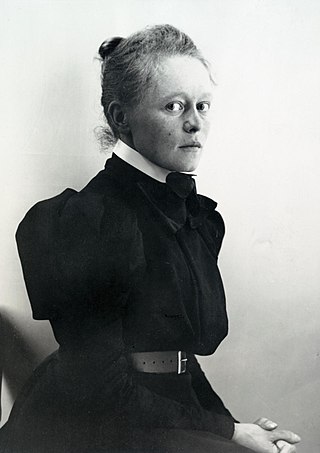
Helena Sofia (Helene) Schjerfbeck was a Finnish painter. A modernist painter, she is known for her realist works and self-portraits, and also for her landscapes and still lifes. Throughout her long life, her work changed dramatically beginning with French-influenced realism and plein air painting. It gradually evolved towards portraits and still life paintings. At the beginning of her career she often produced historical paintings, such as the Wounded Warrior in the Snow (1880), At the Door of Linköping Jail in 1600 (1882) and The Death of Wilhelm von Schwerin (1886). Historical paintings were usually the realm of male painters, as was the experimentation with modern influences and French radical naturalism. As a result, her works produced mostly in the 1880s did not receive a favourable reception until later in her life.
Her work starts with a dazzlingly skilled, somewhat melancholic version of late-19th-century academic realism…it ends with distilled, nearly abstract images in which pure paint and cryptic description are held in perfect balance.

Aalto University School of Arts, Design and Architecture; Finnish: Aalto-yliopiston taiteiden ja suunnittelun korkeakoulu; Swedish: Aalto-universitetets högskola för konst, design och arkitektur), was formed of two separate schools: the faculty of architecture and the University of Art and Design Helsinki. TaiK, founded in 1871, was the largest art university in the Nordic countries. The university awards the following academic degrees: Bachelor of Science in Technology, Architect, Bachelor of Arts, Master of Arts, and Doctor of Arts.

Fiber art refers to fine art whose material consists of natural or synthetic fiber and other components, such as fabric or yarn. It focuses on the materials and on the manual labor on the part of the artist as part of the works' significance, and prioritizes aesthetic value over utility.
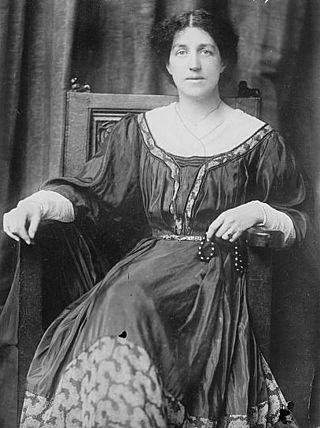
Mary "May" Morris was an English artisan, embroidery designer, jeweller, socialist, and editor. She was the younger daughter of the Pre-Raphaelite artist and designer William Morris and his wife and artists' model, Jane Morris.

Aino Maria Marsio-Aalto was a Finnish architect and a pioneer of Scandinavian design. She is known as a co-founder of the design company Artek and as a collaborator on its most well-known designs. As Artek's first artistic director, her creative output spanned textiles, lamps, glassware, and buildings. It has been discovered that it was Aino who completed the first work commissioned through Artek which was the Viipuri Library in 1935. Her work is in the permanent collection of the Museum of Modern Art (MoMA) in New York,and the MoMA has included her work in nine exhibitions. Aino Aalto’s first exhibition was Art in Progress: 15th Anniversary Exhibitions: Design for Use at MoMA in 1944. Other major exhibitions were at the Barbican Art Gallery in London and Chelsea Space in London. Aino Aalto has been exhibited with Pablo Picasso.
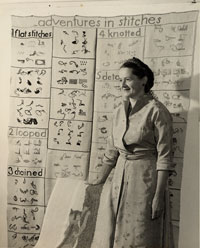
Mariska Karasz was an American fashion designer, author, and textile artist. She had a passion for fashion design and created colorful, patterned garments largely inspired by the folk art of her native country. Her abstract wall hangings mixing fibers such as silk, cotton, wool, and hemp with horsehair and wood garnered her extensive national, and even international, attention. Critics repeatedly praised her for her skillful and unusual use of color, her creative combinations of materials, and her inspiring efforts to promote a modern approach to embroidery.

Maija Sofia Isola was a Finnish designer of printed textiles, and the creator of over 500 patterns, including Unikko ("Poppy"). The bold, colourful prints she created as the head designer of Marimekko made the Finnish company famous in the 1960s. She also had a successful career as a visual artist.
Undisputedly the most famous textile designer... at Marimekko
Nava Lubelski is a contemporary artist who works and lives in Asheville, North Carolina.
Marianne Strengell was an influential Finnish-American Modernist textile designer in the twentieth century. Strengell was a professor at Cranbrook Academy of Art from 1937 to 1942, and she served as department head from 1942 to 1962. She was able to translate hand-woven patterns for mechanized production, and pioneered the use of synthetic fibers.
Johanna Rytkölä is a Finnish sculptor who works in stoneware ceramics. She studied at the University of Art and Design in Helsinki, Finland, receiving a Master of Arts degree in the Department of Art Education in 1982, and in 1986, a Master of Arts degree in the Department of Ceramics and Glass Design. The University of Art and Design became part of the Aalto University in 2010. She received the state artist grant for a five-year period in 2008 and for one year in 2015. She lives and works in the city of Vantaa in her studio house renovated from a former grocery store building.
Emilie Anna Maria Kornerup née Bruzelius (1918–2006) was a Swedish-Danish textile artist who specialized in embroidery and tapestry. She produced works for decorating public buildings and churches, including the Danish Parliament and Roskilde Cathedral. Kornerup was also active as a teacher with the Haandarbejdets Fremme textile guild and the Danish School of Arts and Crafts.
Louisa Pesel (1870–1947) was an English embroiderer, educator and textile collector. She was born in Bradford, and studied textile design at the National Art Training School, causing her to become interested in decorative stitchery. She served as the director of the Royal Hellenic School of Needlework and Lace in Athens, Greece, from 1903 to 1907. Pesel served as the first president of the Embroiderers' Guild. She produced samplers for the Victoria and Albert (V&A) Museum and cushions, kneelers, alms bags and a lectern carpet for Winchester Cathedral. She collected textiles extensively, and following her death in Winchester in 1947, her collection went to the University of Leeds.

Ernestine Nyrop (1888–1975) was a Danish textile artist and fresco painter who is remembered for decorating churches in Denmark and Sweden. In 1930, she published a series of traditional Danish sewing and weaving patterns in Danske Mønstre til Syning og Vævning I-II. From 1937 to 1959, Nyrop contributed actively to Dansk Paramenthandel, an organization devoted to ensuring high-quality standards for textile art in churches.
Lotta Nieminen is a Finnish illustrator and graphic designer based in New York City. She is known for creating children's books, as well designing digital interfaces, publications, packaging and furniture. She has designed content for companies like Facebook, Google, Volkswagen, Bulgari, Marimekko and Hermès.
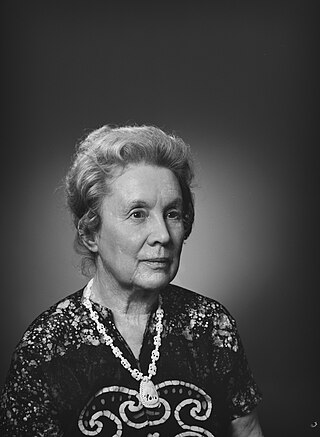
Eva Anttila was a Finnish painter and textile artist. Her work was notable for applying techniques of painting to her textile works and creating pictorial scenes.
Karen Hampton is an American textile artist, working as a weaver, surface designer, and fabric dyer. She has also worked as a researcher on the history of textile production. As of 2022, she was named a Fellow of the American Craft Council. Hampton lives in Los Angeles.
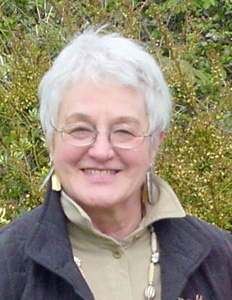
Audrey Walker was an accomplished textile artist, embroiderer and teacher, who was active from the 1970s and 1990s in United Kingdom. Walker became known for developing an innovative style of embroidery based on fine threads applied by machine and by hand, to create striking figurative wall-hung works of art. Walker described her work as evolving from fairly fluid ideas, and the process as being akin to drawing with fabrics.

Greta Skogster was a Finnish textile artist, notable as the leading designer of the 1930-40s and a pioneer of modern textile design in Finland.
Nelly Homi Sethna was an Indian weaver, textile designer, researcher, writer and a crafts activist. She worked on the crossroads of Scandinavian modernism and Indian crafts tradition, which shaped her guiding philosophy. Her close association with Kamaladevi Chattopadhyay played an important role in the revival and promotion of traditional Indian crafts.